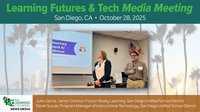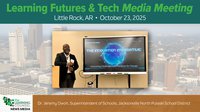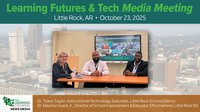Educators constantly search for ways to engage students in STEM (science, technology, engineering, and mathematics). These subjects are foundational for preparing students for the future workforce, yet they are often met with resistance from learners who find them abstract or disconnected from their daily lives. One of the most effective ways to break down these barriers is to teach STEM through the lens of sports. Sports offer real-world, tangible examples that bring STEM concepts to life, making them more relatable, interactive, and exciting for students. By incorporating sports into STEM lessons, educators create an engaging learning environment that fosters curiosity and enhances student comprehension.
I was lucky enough to have the opportunity to incorporate sports into STEM lessons during my time as a middle school math teacher. The moment I told my students we would be learning a math lesson based on sports, I could feel the energy shift. My students would immediately become engaged, which in turn positively impacted their comprehension. I witnessed them grow academically and watched them develop as leaders, teammates, and learners.
STEM education is more than just a curriculum requirement—it is a crucial component in preparing students for the future. STEM fields are growing fast, with the Bureau of Labor statistics predicting that job opportunities in STEM will continue to grow almost three times as fast as non-STEM jobs. Beyond career preparation, STEM subjects support critical thinking, problem-solving, creativity, and collaboration—skills that are valuable in any profession. However, traditional methods of teaching STEM can sometimes feel intimidating to students. Integrating sports into STEM instruction creates a hands-on, engaging learning experience that enhances understanding. This intersection of sports and STEM allows students to see the practical applications of what they learn, making lessons more meaningful.
How Sports and STEM Intersect
Sports naturally incorporate various STEM principles. Every dribble, throw, or jump involves physics, engineering, and mathematics. The materials used in sports equipment involve chemistry and material sciences. The design and maintenance of stadiums rely on engineering and technology. When students see STEM concepts in action through sports, they develop a deeper appreciation for these subjects.
As a teacher, it's nearly impossible to find a curriculum that all students love. However, incorporating sports truly gave me the best “shot.” Whether it was the STEM concepts themselves, the sports angle, or the combination of both, I found there was always something in this method of teaching that resonated.
My students loved exploring STEM through popular sports they already knew, like basketball, football, soccer, and volleyball. However, as their teacher, I also enjoyed introducing them to sports they weren't as familiar with such as golf, lacrosse, and hockey. These lesser-known sports leveled the playing field in terms of their sports knowledge, allowing them to focus even more on the STEM concepts. Here’s how teachers can use sports as a foundation to teach each of the four components of STEM.
Science in Sports
One of the most effective ways to teach physics is through sports. Consider the simple act of dribbling a basketball. This action involves forces, motion, gravity, and energy. By experimenting with bouncing basketballs on different surfaces, students can explore concepts such as energy transfer, the role of friction in movement, and Newton’s Laws of Motion. Conducting experiments to measure the height of a basketball bounce on various surfaces or analyzing how force impacts motion turns abstract physics concepts into engaging, hands-on lessons.
Technology in Sports
Advancements in technology have revolutionized sports. From wearable fitness trackers to high-tech sports equipment, technology plays a crucial role in enhancing performance and safety. A great way to incorporate technology into STEM learning is by examining sports gear, such as helmets. Students can analyze how headgear is designed to minimize injuries in contact sports like football and lacrosse, leading to discussions about impact absorption and material science, the engineering design process, and data analysis in sports performance. Encouraging students to utilize technology while designing their own protective sports gear provides hands-on experience with problem-solving and critical thinking skills.
Engineering in Sports
Engineering is integral to sports, from the construction of stadiums to the design of sports shoes. For example, students can explore how different shoe designs impact an athlete’s performance. A lesson on shoe design might involve examining various types of sports shoes and their materials, understanding the engineering design process, and conducting experiments to test grip, weight, and durability.
By designing their own sports shoes, students gain insight into engineering principles in a fun and interactive way. Additionally, students can explore the engineering behind sports stadiums, examining how structural integrity, crowd dynamics, and energy efficiency contribute to the overall design of these massive venues. Exploring adaptive sports equipment also provides an opportunity for students to brainstorm solutions for athletes with disabilities, promoting inclusivity and real-world problem-solving.
Mathematics in Sports
Math is at the core of sports strategy, statistics, and performance analysis. Soccer throw-ins provide an opportunity to teach students about measurement, angles, and conversions. Students can measure the distance of their throw-ins using different techniques, convert measurements between metric and imperial units, and analyze data to determine the most effective throwing method. Applying mathematical concepts to real-life sports scenarios helps students gain a deeper understanding of mathematical principles and their practical applications.
At one point in my teaching career, I taught a number of students twice in one day: once as their STEM teacher and again as their 8th-grade math teacher. I’ll never forget a couple of students who fell into this category. In my math class they were learning about the Pythagorean Theorem and its real-world applications. To say the least, these students were uninspired by the concept and resistant to completing their assignment on the lesson. My STEM class also happened to be learning about the Pythagorean Theorem, but through the lens of soccer. My students were using the Pythagorean Theorem to calculate the distance a soccer ball traveled during a throw-in. My students in this class eagerly volunteered to be part of the demo group and complete calculations with absolutely no resistance. The difference in these two classes was the context of the lesson. I watched the same students learn the same STEM concept in two completely different ways. This experience solidified how game-changing sports can be in STEM education.
Strategies for Teaching STEM Through Sports
There's no single right way to incorporate sports into STEM education. To maximize the effectiveness, I encourage educators to try a few different approaches to see what works best for their students.
● Follow project-based learning (PBL) to encourage students to work collaboratively on STEM projects related to sports, such as designing a mini-golf course using angles and friction.
● Use real-world connections to align STEM lessons with major sporting events like the Super Bowl or the Olympics to help capture students’ interest.
● Invite guest speakers, such as athletes, coaches, or sports engineers to provide students insights into the role of STEM in real-life careers.
● Encourage students to collect and analyze real sports data—such as tracking their own speed, reaction time, or shooting accuracy— to create meaningful connections between mathematical concepts and their real-world applications.
● Plan field trips to sports science labs, stadiums, or training centers to provide direct exposure to STEM professionals working in sports-related careers.
The Broader Impact of STEM in Sports Education
Beyond individual classroom applications, integrating STEM with sports has a profound impact on student engagement and career readiness. Many students who may not initially express an interest in STEM find themselves drawn to these subjects when they see their relevance in sports. This approach is particularly effective in reaching underrepresented groups in STEM, including students from diverse backgrounds and those who may struggle with traditional learning methods. Positioning STEM as an essential part of athletic success opens doors for students to explore fields such as sports medicine, biomechanics, data science, and engineering. Furthermore, sports and STEM integration support the development of critical soft skills, such as teamwork, communication, and adaptability, all of which are valuable in both academic and professional settings.
Integrating sports into STEM education provides students with a dynamic, engaging learning experience that makes complex concepts more accessible and enjoyable. This approach not only enhances students' understanding of STEM subjects but also fosters a lifelong appreciation for learning. As educators, our goal is to make STEM relevant, exciting, and impactful—and sports offer the perfect avenue to achieve this.
Incorporating sports and STEM concepts transformed my experience as a teacher, and in turn, it transformed the experience for my students. It made teaching and learning genuinely fun and exciting again! Personally, I could have continued down that path for quite some time, but then an opportunity arose to support teachers across the country who were seeking the same breakthrough. Talk about a dream come true. Now in my role as the Curriculum and Education Specialist at STEM Sports, my impact expanded from one teacher with 150 students to hundreds of teachers with thousands of students across the country. I look forward to continuing to advocate for using sports to enhance STEM education. Encouraging students to recognize the STEM applications in the sports they love can be a game-changer in their educational journey, setting them on a path toward success in both academics and future careers.
About the author
Haley MacLean is the curriculum and education specialist for STEM Sports®. Haley has been a teacher since 2016, and has taught a variety of subjects including Math, STEM, and AVID. She has taught in a Title 1 school district and has worked with a variety of learners including honors students, general education students, special education students, and English Language Learners. She is also a Nationally Board Certified Teacher in Early Adolescent Math. She can be reached at haley@stemsports.com.











